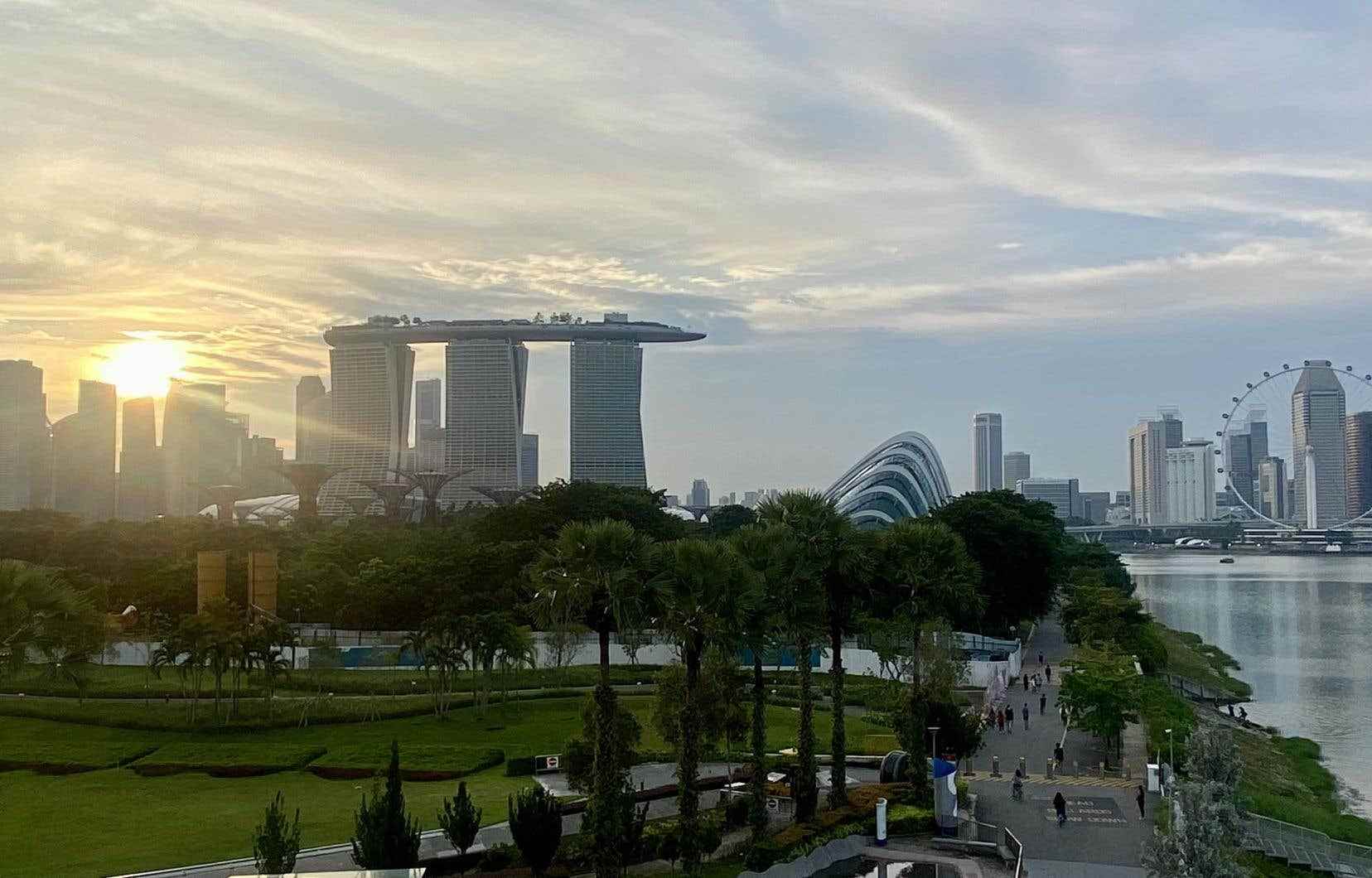This text is part of the special book Plaisirs
Located in the south of Malaysia, very close to Indonesia, Singapore has its own culinary identity, as mixed as it is unique. Peranakan cuisine is a happy blend of Chinese, Malaysian and Indian cuisines.
This lush island has had its share of occupations over time. Passing leaders give him all the names, but some of them stay. Pulau Ujong, its Malaysian name, still refers to the main island of the archipelago of 68 islands. It is also called Temasek, which means marine town (sea town), in the 13the century. It is to Parameswara, a prince of Palembang, that returns the name of Singapura, a kingdom which he founded at the end of the XIVe century. The legend says that there would have been sight of an animal resembling a lion, hence Singapura, “city of the lion” in Sanskrit. Moreover, the “merlion”, a mythical creature with the head of a lion and the body of a fish, is the emblem of Singapore.
Then comes European colonization. The Portuguese arrived in the region at the beginning of the XVIe century. In 1613, the rulers of the sultanate destroyed the Portuguese outpost. At the same time, the Dutch East India Company aims to take its place in the region. They reigned there from 1641 to 1825.
In 1819, the British Thomas Stamford Raffles, of the East India Company, is looking for a commercial port in the surroundings. Shortly after, Singapore becomes a British colony. The Straits of Malacca (between Malaysia and Indonesia) and Singapore become the Straits Settlements, territories under British administration.
In the same years, a first wave of Chinese immigrants arrived in Singapore. Even today, 75% of Singaporeans are of Chinese origin, 15% of Malaysian origin and 8% of Indian origin. It is above all this part of history that we taste in Singaporean cuisine.
The madness of food fairs
Our appetites whetted, we headed straight for the Lau Pa Sat food fair, in the heart of the financial district. Surprisingly, but true, these places are known for serving great food at affordable prices.
Here you can find the essence of Singaporean cuisine, such as the laksa — soup made with coconut milk and sambal, a paste of hot peppers —, Hainanese chicken rice — steamed, the dish is placed on rice cooked in very greasy chicken broth —, and thalis Indians — an assortment of dishes served with rice and flatbreads varying by region.
However, we let ourselves be tempted by a chicken curry soup and thin egg noodles. Served in a plastic tray, like in the cafeteria, the generous bowl of soup costs 5.90 Singapore dollars, or a few cents close to the amount in Canadian dollars. The steaming broth is spiced to perfection, the chicken is tender and juicy and the noodles have taken on the taste of all the soup ingredients. It must be 38 degrees in the shade, but eating soup strikes us as the idea of the century. It also makes up the majority of our meals in Singapore, including breakfast.
In the evening, this food court turns into lively street food and highly coveted by fans of satays, these delicious skewers of meat cooked over charcoal and served with a crunchy peanut sauce. One of the streets bordering the fair is closed, large tables and stools are installed there. We understand that at fairs the best way to choose a booth is to go for the one with the longest queue. Booth number 8 – there are about fifteen of them – self-proclaimed as serving the best satay, is obviously the safe bet in Lau Pa Sat.
Peranakan cuisine in the Michelin Guide
Singapore’s culinary signature is so special that the Candlenut restaurant, which serves upscale Peranakan cuisine, has earned a star in the Michelin Guide since 2016. It is also the only starred establishment to highlight this cuisine in the world.
Housed in the former British army barracks, the Candlenut shares its space with other restaurants and cafes that are more relaxed. In the spirit of family cooking, all dishes from renowned chef Malcolm Lee’s tasting menu are for sharing.
In the fray, the dish of barramundi — a fish with white and delicate flesh — is divine. It is cooked in a fermented soy and ginger batter, accompanied by spinach, Chinese chives, green onions, and garnished with ginger and fried shallots. The wild white shrimp dish is equally delicious. The shellfish are served with tender aubergines, long beans, a piece ofaburaage — Japanese fried tofu — on which is placed a sheet of laksaalso known as Vietnamese mint or Chinese basil.
Each dish includes unknown ingredients and flavors. They are eaten with care, one ingredient at a time, then in the perfect bite. That pretty much sums up our dining experience in Singapore. We don’t discover completely new taste references every day. It’s common here, making it an extraordinary culinary destination.
Our journalist was the guest of the Singapore Tourism Board.
This special content was produced by the Special Publications team of the To have to, pertaining to marketing. The drafting of To have to did not take part.
